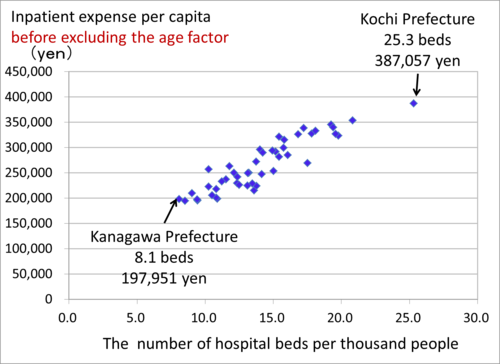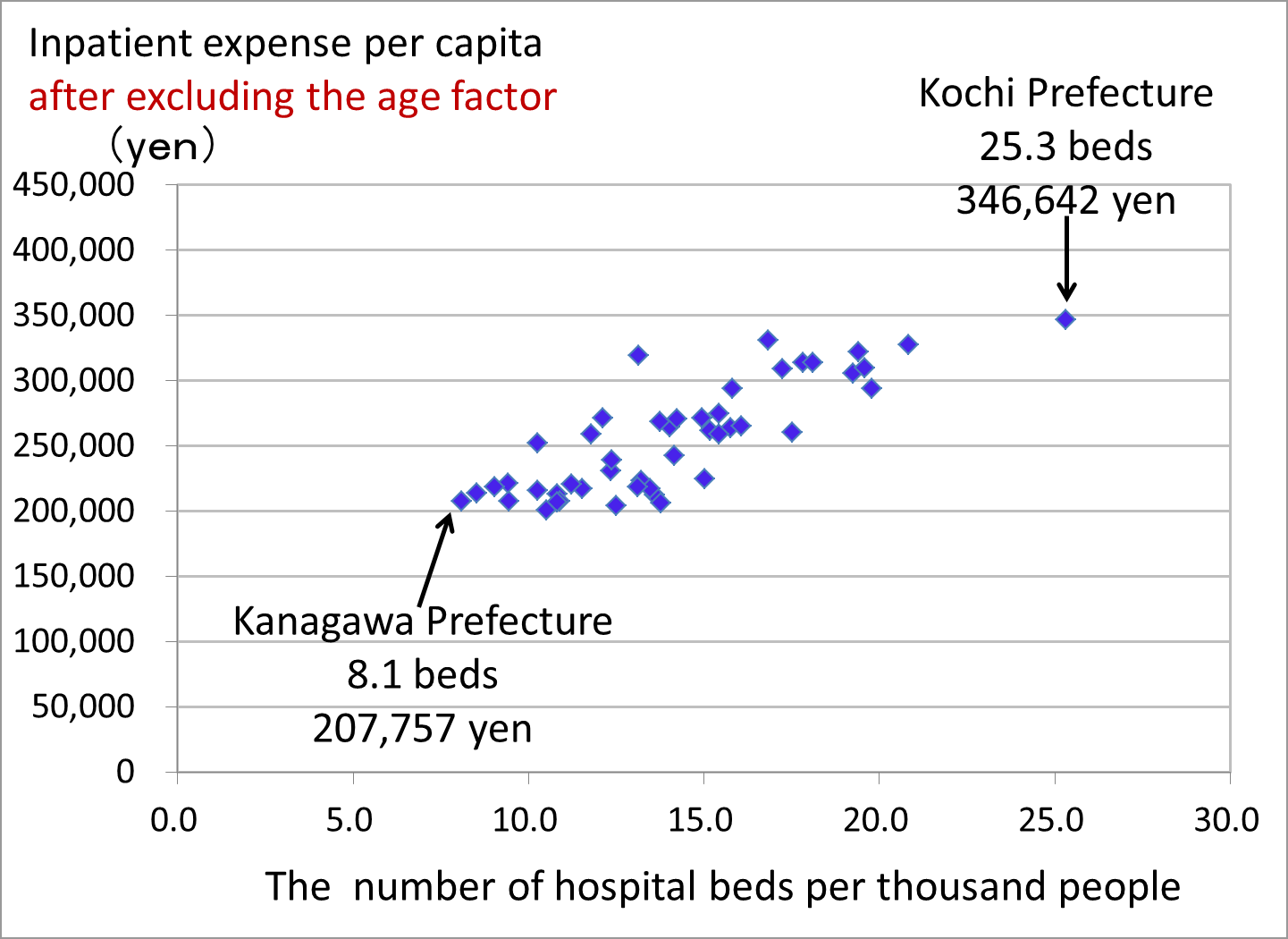Column Finance and the Social Security System 2019.01.22
【Aging, safety net and fiscal crisis in Japan】No.146: Inpatient expense per capita is larger for areas with more hospital beds
In Column No. 3, I pointed out that Japan has overinvested in its medical care delivery system. Available data show evidence that this overinvestment is generating superfluous medical care services.
In Figure 1, the horizontal axis is the number of hospital beds per one thousand people and the vertical axis is inpatient expense per capita. Figure 1 shows the data of 47 prefectures. The number of beds per thousand people in the Kochi prefecture is 25.3 beds, more than three times that in the Kanagawa prefecture (8.1 beds). As a result, the inpatient expense per capita in the Kochi prefecture is 387,057 yen, twice that of the Kanagawa prefecture (197,951 yen).
Figure 1: Correlation between the number of beds and inpatient expense per capita
----- Before excluding the age factor, in 2016 -----

Source: Ministry of Health, Labour and Welfare
On the other hand, in a prefecture where the proportion of elderly people is larger than that of other prefectures, the inpatient expense per capita is also larger, as the elderly consume more inpatient services. Therefore, the inpatient expense per capita should be calculated by excluding the age factor (see Column No. 10), while the data in Figure 1 is before such adjustment. Figure 2 shows the data after excluding the age factor.
Figure 2: Correlation between the number of beds and inpatient expense per capita
----- After excluding the age factor, in 2016 -----

Source: Ministry of Health, Labour and Welfare
